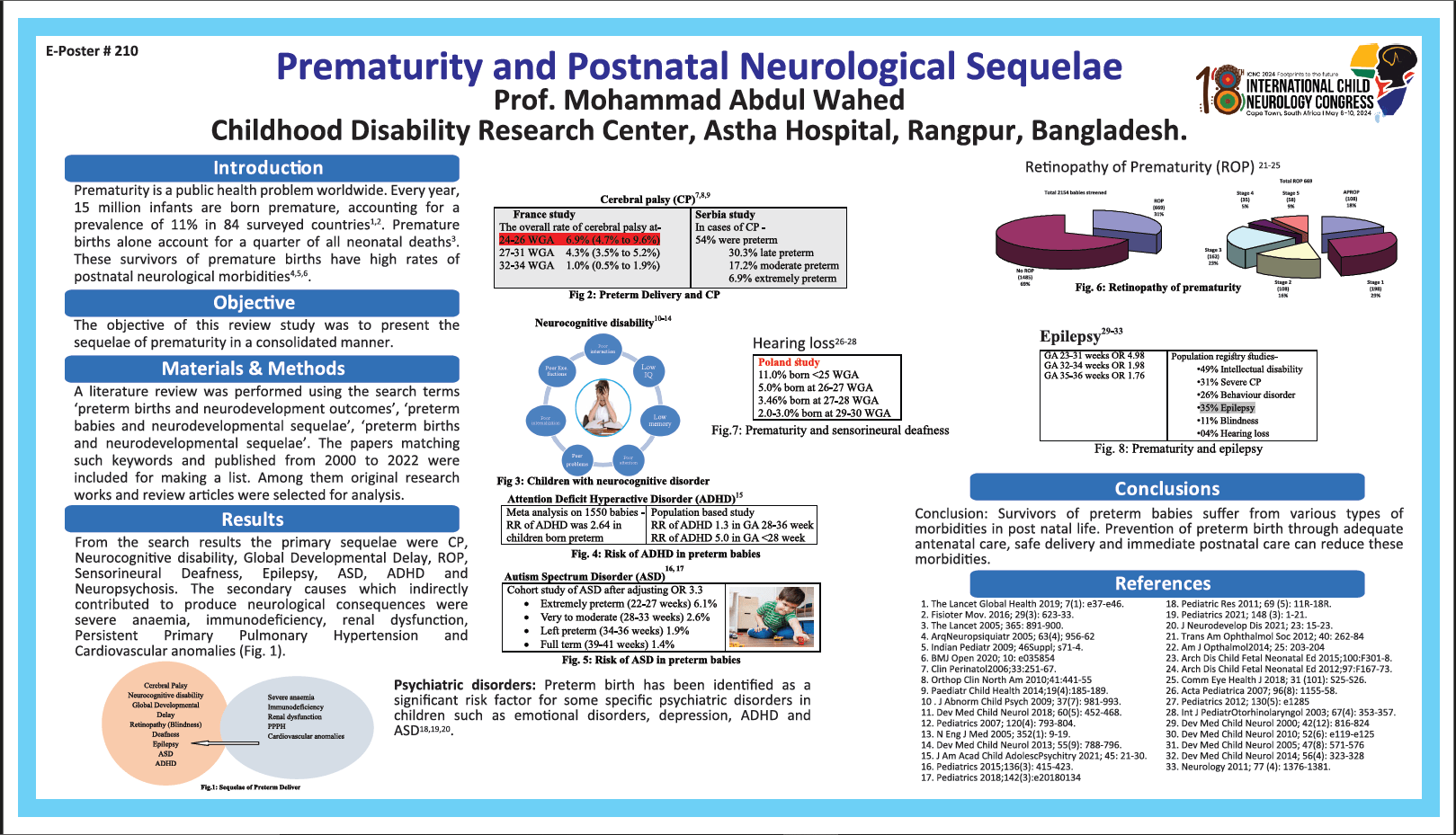Prematurity And Postnatal Neurological Sequelae – A Review Update
Introduction: Every year, 15 million infants are born premature, accounting for a prevalence of 11% in 84 surveyed countries. Advances the neonatal healthcare has resulted in gradual decline of this mortality rate but have not led to parallel decrease in morbidities due to improving survival of borderline viable cases. Methodology: A literature review was performed using the search terms ‘preterm births and neurodevelopment outcomes’, ‘preterm babies and neurodevelopmental sequelae’. The papers matching such keywords and published from 2001 to 2022 were included for making a list. Among them original research works and review articles were selected for analysis. Incidence, prevalence and risk ratios of neurological sequelae are presented. Results: The survivors of premature births have high rates of postnatal neurological sequelae. The frequent and notable postnatal morbidities are Cerebral palsy (CP), Neurocognitive disorders, Global Developmental Delay. Retinopathy of Prematurity (ROP), Sensorineural Deafness, Epilepsy, Autism Spectrum Disorder (ASD), Attention Deficit Hyperactive Disorder (ADHD) and Neuropsychosis. The risk of cerebral palsy is 8-10 times higher in preterm infants. Children and adolescents born extremely preterm have an average 12.9 IQ points lower than term-born controls with an approximately 30% increased risk of ASD and 2.64 increased risk of ADHD. Conclusion: Preventive measures should be implemented from pregnancy to reduce the rate of premature births and intensive neonatal care and regular follow-up of preterm babies are advised.
M A Wahed
Astha Hospital, Rangpur
Bangladesh
